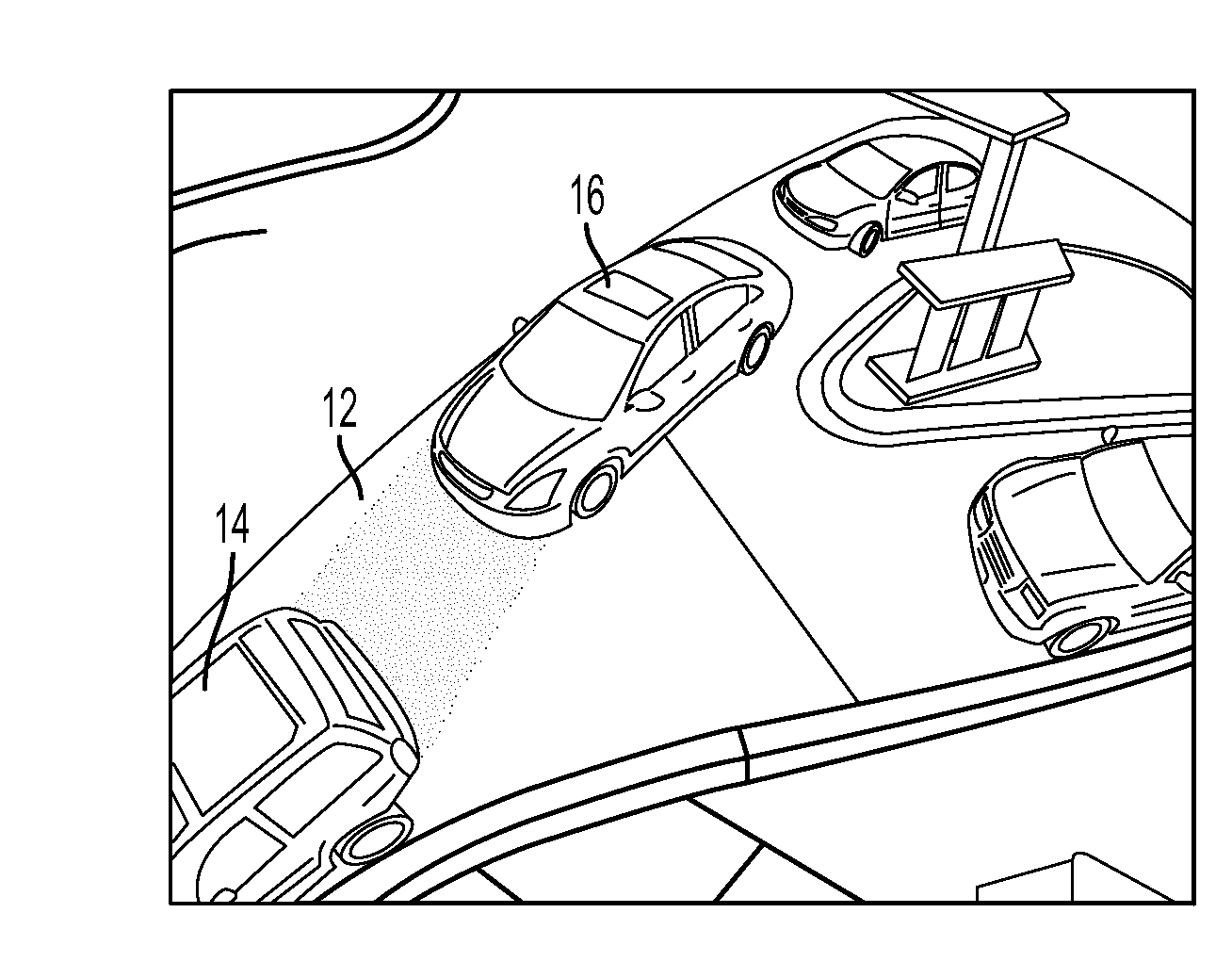Feature- and classifier-based vehicle headlight/shadow removal in video
a technology of feature and classifier, applied in image enhancement, image analysis, instruments, etc., can solve problems such as shadows, special problems, and false foreground object detection
- Summary
- Abstract
- Description
- Claims
- Application Information
AI Technical Summary
Benefits of technology
Problems solved by technology
Method used
Image
Examples
Embodiment Construction
[0028]The present disclosure relates to a system and method for removing false foreground image content, such as headlight and shadows that may distort the outline of a segmented object, in a foreground detection process performed on an image or a video sequence. Herein, the terms “incoming frame” and / or “current frame” refer to a video frame that is currently being processed for foreground / motion detection. This processing can be focused on a region of interest (“ROI”) within the frame.
[0029]The term “headlight” can include “headlight reflection”, “headlight road reflection”, and “ground reflection”, and generally refers to a field of space illuminated by a (vehicle) headlight or headlamp. However, the term can also refer to light cast from lighting devices, such as jogger headlamps, carried or worn on pedestrians. The type and / or source of headlight contemplated herein can is not limited to any one scenario. For example, embodiments are contemplated where the field of space includ...
PUM
 Login to View More
Login to View More Abstract
Description
Claims
Application Information
 Login to View More
Login to View More - R&D
- Intellectual Property
- Life Sciences
- Materials
- Tech Scout
- Unparalleled Data Quality
- Higher Quality Content
- 60% Fewer Hallucinations
Browse by: Latest US Patents, China's latest patents, Technical Efficacy Thesaurus, Application Domain, Technology Topic, Popular Technical Reports.
© 2025 PatSnap. All rights reserved.Legal|Privacy policy|Modern Slavery Act Transparency Statement|Sitemap|About US| Contact US: help@patsnap.com



